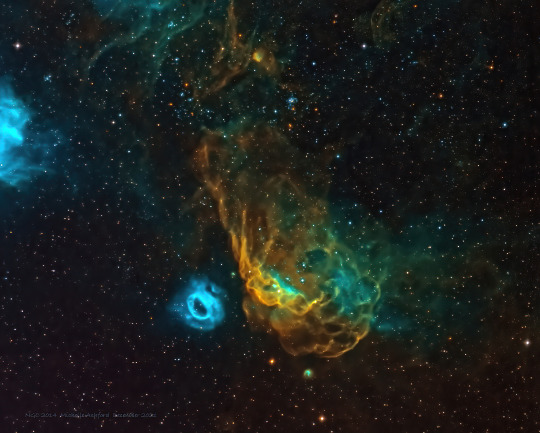#NGC 2014
Explore tagged Tumblr posts
Text

Cosmic Reef NGC 2014 © edholtastro
#space#universe#astrophotography#cosmic reef#nebula#stars#solar system#night sky#astronomy#nasa#galaxy#cosmos#planet#ngc 2014
1K notes
·
View notes
Text

Nebulosity in the LMC // gregengland
#astronomy#astrophotography#nebula#emission nebula#star-forming region#LMC#large magellanic cloud#NGC 1934#IC 2128#NGC 1937#NGC 1955#NGC 1968#NGC 2002#NGC 2004#NGC 2014#NGC 2020#NGC 2027#NGC 2030#NGC 2032#NGC 2034#NGC 2035#NGC 2040#NGC 2041#dorado
49 notes
·
View notes
Text

Cosmic Reef
The giant red nebula (NGC 2014) and its smaller blue neighbor (NGC 2020) are part of a vast star-forming region in the Large Magellanic Cloud, a satellite galaxy of the Milky Way, located 163,000 light-years away.
Credits: NASA, ESA, and STScI
#nebula#space#galaxy#constellations#nasa#hubble#astrophotography#stars#astronomy#cosmos#universe#space exploration#space photography#outer space#astro observations#aesthetic
258 notes
·
View notes
Photo



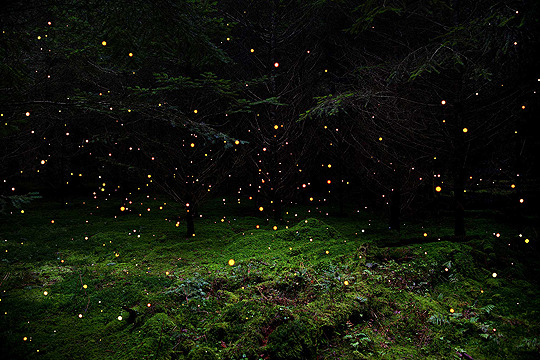
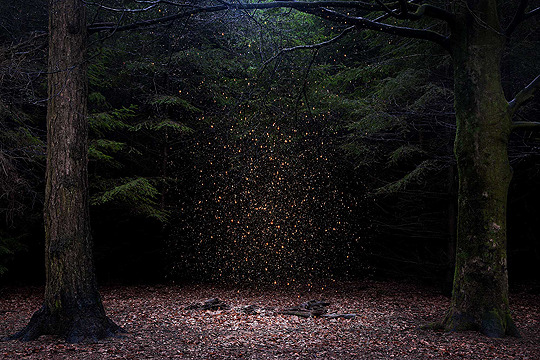
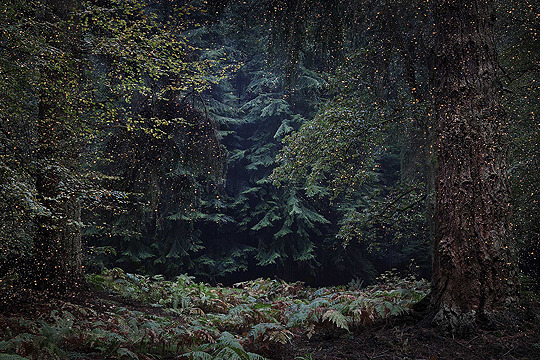
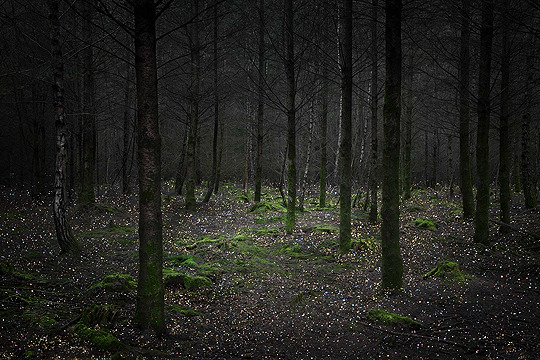
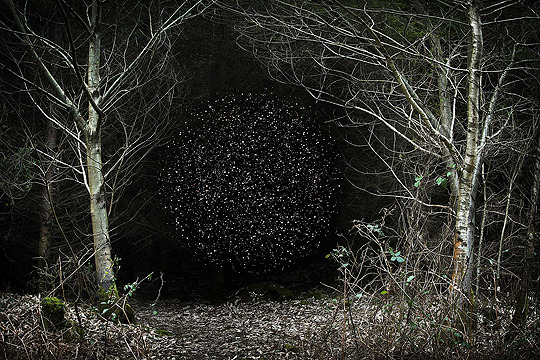
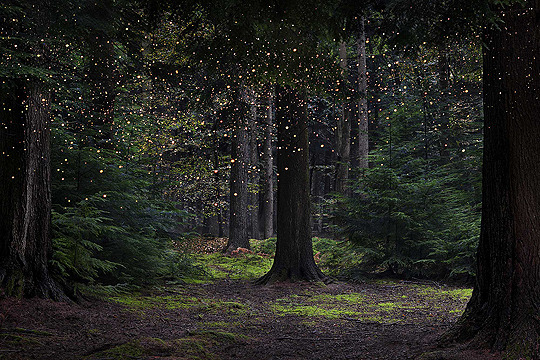
Ellie Davies, Stars, 2014-2015
Forest landscapes interposed with images of the Milky Way, Omega Centauri, the Norma Galaxy and Embryonic stars in the Nebula NGC 346 captured by the Hubble Telescope.
474 notes
·
View notes
Text
Tapestry of Blazing Starbirth
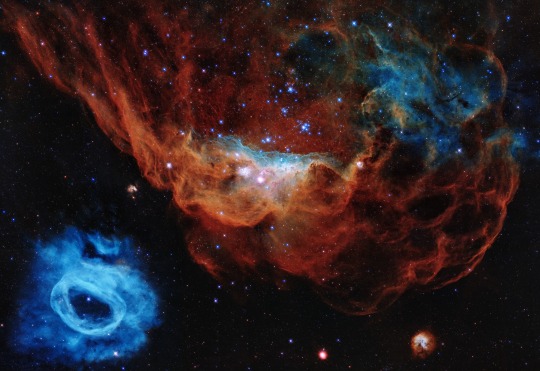
This image is one of the most photogenic examples of the many turbulent stellar nurseries the NASA/ESA Hubble Space Telescope has observed during its 30-year lifetime. The portrait features the giant nebula NGC 2014 and its neighbour NGC 2020 which together form part of a vast star-forming region in the Large Magellanic Cloud, a satellite galaxy of the Milky Way, approximately 163,000 light-years away.
95 notes
·
View notes
Text

This image was taken as part of Advanced Observing Program (AOP) program at Kitt Peak Visitor Center during 2014.
Cleopatra’s Eye, or NGC 1535, is a planetary nebula in the constellation Eridanus. This nebula has an unusual structure that is similar to the better-known NGC 2392, with an outer region and a brighter inner center.
A planetary nebula forms when a star approximately the size of our Sun dies, exhaling its outer layers into space as the core turns into a white dwarf star. Through early telescopes these objects resembled planets – giving them their name – but planetary nebulae are unrelated to actual planets.
Hubble observed this nebula as part of a study of over 100 planetary nebulae with nearby stars. The proximity of the stars indicated a possible gravitational connection between the nearby stars and the central stars of the nebulae. Observations of the distance between NGC 1535’s central star and its possible companion suggest that Cleopatra’s Eye is indeed part of a gravitationally bound binary star system.
2 notes
·
View notes
Note
I'm not gonna lie, when I saw you shipped with RED I pogged a little, NGC is my absolute favorite creepypasta
Same, it's always been my fav Creepypasta, with Ritual Items series being a close second. I remember watching it back in..... 2013-2014? And I think I was always a little in love with RED from there.
Either way, he's my fav beastie, la creatura if you will 🩷
#snailmail#it was completely accidental that I named my s/i Saul#i completely forgot about Solomon when I was coming up with the name 😭
3 notes
·
View notes
Text

The hidden intricacies of Messier 106
Featured in this new image from the NASA/ESA/CSA James Webb Space Telescope is Messier 106, also known as NGC 4258. This is a nearby spiral galaxy that resides roughly 23 million light-years away in the constellation Canes Venatici, practically a neighbor by cosmic standards. Messier 106 is one of the brightest and nearest spiral galaxies to our own, and two supernovae have been observed in this galaxy, in 1981 and 2014.
At its heart, as in most spiral galaxies, is a supermassive black hole, but this one is particularly active. Unlike the black hole at the center of the Milky Way, which pulls in wisps of gas only occasionally, Messier 106's black hole is actively gobbling up material. As the gas spirals towards the black hole, it heats up and emits powerful radiation.
This image was captured with Webb's Near-InfraRed Camera (NIRCam). This observation was taken as part of a dedicated program to study the galaxy's active galactic nucleus, the galaxy's bright central region that is dominated by the light emitted by dust and gas as it falls into the black hole.
The blue regions in this image reflect stellar distribution throughout the central region of the galaxy. The orange regions indicate warmer dust and the stronger red hues represent colder dust. The teal, green and yellow tones near the center of the image depict varying gas distributions throughout the region.
The galaxy has a remarkable feature—it is known to have two "anomalous" extra arms visible in radio and X-ray wavelengths, rather than in the visible. Unlike the normal arms, these are composed of hot gas instead of stars.
Astronomers believe these extra arms result from the black hole's activity, a feedback effect seen in other galaxies as well. They are likely caused by outflowing material produced by the violent churning of gas around the black hole, creating a phenomenon analogous to a wave crashing up out of the ocean when it hits a rock near the shore.
Despite carrying his name, Messier 106 was neither discovered nor cataloged by renowned 18th-century astronomer Charles Messier. Discovered by his assistant, Pierre Méchain, the galaxy was never added to the catalog in his lifetime. Along with six other objects discovered but not logged by the pair, Messier 106 was posthumously added to the Messier catalog in the 20th century.
IMAGE: The central region of a spiral galaxy. Its core is a small bright point radiating bright, bluish-white light over the scene. The white light is diffuse and many point-like stars in the galaxy (and even background galaxies) can be seen through it. The galaxy’s arms can be seen as broad, swirling streaks of glowing gas and dust, colored red and orange. Two additional arms are revealed in green. Credit: ESA/Webb, NASA & CSA, J. Glenn
3 notes
·
View notes
Text
Consultabile online il nuovo Siena Galaxy Atlas 2020
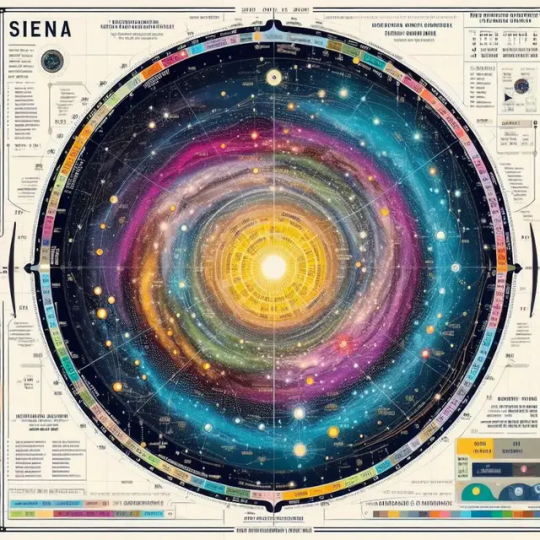
Siena, un nuovo atlante con 380mila galassie, pubblicato online il Siena Galaxy Atlas 2020. È online il Siena Galaxy Atlas, un atlante dettagliato di quasi 400mila galassie, compilato utilizzando i dati dei telescopi NoirLab di Nsf e progettato per essere il principale atlante galattico digitale per le galassie grandi. Si tratta di un tesoro di informazioni, utili per lo studio di vari aspetti dell’universo, dalla formazione ed evoluzione delle galassie alla materia oscura e alle onde gravitazionali. Tutti i dettagli su ApJ.

Ngc 520, una collisione di due galassie iniziata più di 300 milioni di anni fa, è in realtà composta da due galassie a disco che alla fine si fonderanno per formare un sistema più grande e massiccio. Ngc 520 fu scoperta da William Herschel nel 1784 ed è una delle galassie più grandi e luminose del Siena Galaxy Atlas. Crediti: Ctio/ NoirLab/ Doe/ Nsf/ Aura; J. Moustakas (Siena College); T.A. Rector (University of Alaska Anchorage/Nsf’s NoirLab) & M. Zamani (Nsf’s NoirLab) & D. de Martin (Nsf’s NoirLab) Gli astronomi cercano da tempo di mappare i cieli notturni, non solo per avere una visione il più possibile completa dell’universo in cui viviamo, ma anche per supportare ulteriori ricerche. I cataloghi di oggetti astronomici servono a molti scopi: possono aiutare gli scienziati a individuare modelli generali in una popolazione di oggetti, a scoprire nuovi fenomeni come ad esempio eventi astronomici transienti, e a identificare quelli che potrebbero essere i candidati migliori per osservazioni mirate. Tuttavia, queste risorse devono essere regolarmente aggiornate per tenere conto dei risultati ottenuti grazie ai continui miglioramenti tecnologici dei telescopi. Ora è stato pubblicato un nuovo atlante con informazioni dettagliate su oltre 380mila galassie con un livello di precisione mai raggiunto prima. Si chiama Siena Galaxy Atlas (Sga) ed è una raccolta di dati provenienti da tre survey completate tra il 2014 e il 2017, note come Desi Legacy Surveys, effettuate per identificare le galassie target per la survey del Dark Energy Spectroscopic Instrument (Desi). I dati sono stati raccolti presso l’Osservatorio interamericano di Cerro Tololo (Ctio) e l’Osservatorio nazionale di Kitt Peak (Kpno), entrambi programmi del NoirLab della National Science Foundation (Nsf), e presso lo Steward Observatory dell’Università dell’Arizona. Le Desi Legacy Surveys hanno utilizzato strumenti all’avanguardia sui telescopi gestiti da NoirLab: la Dark Energy Camera Legacy Survey (DeCaLS), effettuata utilizzando la Dark Energy Camera (DeCam) costruita dal Doe sul telescopio da 4 metri Víctor M. Blanco al Ctio in Cile; la Mayall z-band Legacy Survey (MzLS) con la fotocamera Mosaic3 sul telescopio da 4 metri Nicholas U. Mayall al Kpno; e la Beijing-Arizona Sky Survey (Bass) realizzata con la fotocamera 90Prime sul telescopio Bok da 2,3 metri, gestito dallo Steward Observatory e ospitato presso Kpno. I dati delle Desi Legacy Imaging Surveys, così come una copia dell’intero Siena Galaxy Atlas, vengono forniti alla comunità astronomica tramite la piattaforma scientifica Astro Data Lab e l’Astro Data Archive presso il Community Science and Data Center (Csdc) di NoirLab. Sga contiene anche dati aggiuntivi provenienti da una survey condotta dal satellite Wide-field Infrared Survey Explorer (Wise) della Nasa, rielaborati da Aaron Meisner, astronomo del NoirLab. Queste survey hanno catturato immagini nelle lunghezze d’onda ottiche e infrarosse per mappare un’area totale di 20mila gradi quadrati – quasi la metà del cielo notturno, rendendola tra le più grandi survey sulle galassie. Riunendo questa ricchezza di informazioni in un unico posto, Sga offre dati precisi sulla posizione, la forma e le dimensioni di centinaia di migliaia di grandi galassie relativamente vicine. Oltre all’enorme numero di oggetti registrati, i dati nella raccolta Sga raggiungono anche un nuovo livello di accuratezza ed è la prima risorsa di questo tipo a fornire dati sui profili di luce delle galassie.

Mosaico ottico di 42 galassie del Siena Galaxy Atlas 2020 ordinate per diametro angolare crescente da sinistra in alto, a destra in basso. Le galassie vengono scelte casualmente da una distribuzione di probabilità uniforme nel diametro angolare. La barra bianca orizzontale nell’angolo inferiore sinistro di ciascun pannello rappresenta 1 minuto d’arco e i ritagli del mosaico vanno da 3,2 a 13,4 minuti d’arco. Questa figura illustra l’enorme gamma di tipologie, dimensioni, colori e profili di luminosità superficiale, struttura interna e ambienti delle galassie presenti nell’atlante. Crediti: Ctio/ NoirLab/ Doe/ Nsf/ Aura/ J. Moustakas «Le grandi galassie vicine sono importanti perché possiamo studiarle in modo più dettagliato di qualsiasi altra galassia nell’universo; sono i nostri vicini cosmici», osserva John Moustakas, professore di fisica al Siena College a capo del progetto Sga. «Non solo sono straordinariamente belle, ma contengono anche la chiave per comprendere come si formano e si evolvono le galassie, inclusa la nostra, la Via Lattea». Sga si basa su diversi cataloghi compilati nei secoli scorsi. L’iconico Catalogue des Nébuleuses et des Amas d’Étoiles (Catalogo delle nebulose e degli ammassi stellari), pubblicato nel 1774 dall’astronomo francese Charles Messier, fu una pietra miliare importante, così come lo fu il Nuovo Catalogo Generale delle Nebulose e degli Ammassi di Stelle (Ngc), pubblicato nel 1888 da John Louis Emil Dreyer. Più recentemente, nel 1991, gli astronomi hanno realizzato il Terzo Catalogo di Riferimento delle Galassie Luminose (Rc3). Negli ultimi due decenni sono stati pubblicati molti altri preziosi atlanti di galassie, ma la maggior parte di essi si basa sulle misurazioni su lastre fotografiche dell’Rc3, oppure mancano un numero significativo di galassie. Poiché Sga utilizza immagini digitali catturate con strumenti altamente sensibili, rappresenta un miglioramento sostanziale sia nella qualità che nella completezza dei dati. «Precedenti compilazioni di galassie erano afflitte da posizioni, dimensioni e forme errate delle galassie e contenevano anche voci che non erano galassie ma stelle o artefatti», spiega Arjun Dey, astronomo del NoirLab coinvolto nel progetto. «Sga ripulisce tutto questo per gran parte del cielo. Fornisce inoltre le migliori misurazioni della luminosità delle galassie, qualcosa che non avevamo mai avuto prima in modo affidabile per un campione di queste dimensioni».

IC 4212 è una galassia spirale barrata situata nella costellazione della Vergine. Si trova vicino all’equatore celeste, il che significa che in alcuni periodi dell’anno è visibile almeno in parte da entrambi gli emisferi. Crediti: Ctio/ NoirLab/ Doe/ Nsf/ Aura; J. Moustakas (Siena College); T.A. Rector (University of Alaska Anchorage/Nsf’s NoirLab) & M. Zamani (Nsf’s NoirLab) & D. de Martin (Nsf’s NoirLab) Questa risorsa versatile guiderà il progresso in numerosi rami dell’astronomia e dell’astrofisica aiutando gli scienziati a trovare i migliori campioni di galassie per l’osservazione mirata. Ad esempio, Sga migliorerà la ricerca su come i modelli di formazione stellare variano nelle diverse galassie, sui processi fisici alla base della vasta gamma di morfologie che le galassie mostrano e su come la distribuzione delle galassie è correlata al modo in cui la materia oscura si diffonde nell’universo. Agendo come una mappa, Sga aiuterà anche gli astronomi a individuare le sorgenti di segnali transitori come le onde gravitazionali e a comprendere gli eventi che ne danno origine. «Sga diventerà il più importante atlante galattico digitale per le grandi galassie», afferma Dey. Tuttavia, sottolinea, Sga non è riservato solo ai ricercatori accademici, ma è liberamente consultabile online per chiunque desideri conoscere meglio il nostro angolo di universo. «Il rilascio pubblico di questi dati spettacolari contenuti nell’atlante avrà un impatto reale non solo sulla ricerca astronomica, ma anche sulla capacità del pubblico di visualizzare e identificare le galassie relativamente vicine», conclude Chris Davis, direttore del programma Nsf per NoirLab. «Gli astrofili più appassionati lo apprezzeranno particolarmente in quanto risorsa a cui rivolgersi per saperne di più su alcuni degli obiettivi celesti che osservano». Per saperne di più: Leggi su The Astrophysical Journal l’articolo “Siena Galaxy Atlas 2020” di John Moustakas, Dustin Lang, Arjun Dey, Stéphanie Juneau, Aaron Meisner, Adam D. Myers, Edward F. Schlafly, David J. Schlegel, Francisco Valdes, Benjamin A. Weaver, and Rongpu Zhou - Esplora il Siena Galaxy Atlas 2020 Read the full article
#Cataloghiastronomici#galassie#grandigalassie#materiaoscura#NoirLab#nuovoatlante#ondegravitazionali#SienaGalaxyAtlas#telescopioNsf#vialattea
2 notes
·
View notes
Text
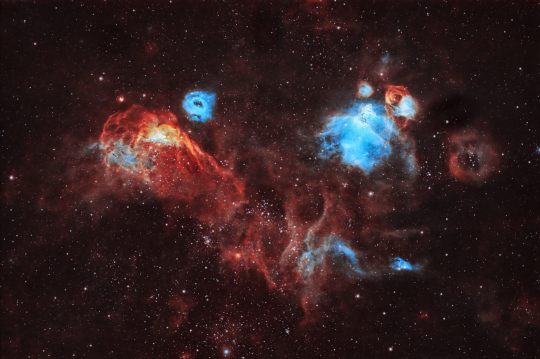
The Cosmic Reef in the LMC // Richard Bamfield
Included in this image are the nebulae (from left to right): NGC 2014 (red), NGC 2020 (blue), NGC 2030+NGC 2032+NGC 2035 (blue), and NGC 2040 (blue and red).
#astronomy#astrophotography#nebula#emission nebula#star-forming region#NGC 2020#NGC 2014#NGC 2030#NGC 2035#NGC 2032#NGC 2040#LMC#large magellanic cloud#dorado
77 notes
·
View notes
Text
Due nubi di gas incandescenti molto diverse nella Grande Nube di Magellano
Il Very Large Telescope dell’ESO ha catturato una vista dettagliata di una regione di formazione stellare nella Grande Nube di Magellano, una delle galassie satelliti della Via Lattea. Questa immagine nitida rivela due nubi di gas incandescenti. NGC 2014 (a destra) ha una forma irregolare e rossa, mentre la sua vicina, NGC 2020, è rotonda e blu. Queste forme strane e molto diverse sono state…

View On WordPress
0 notes
Link
The Milky Way is just one galaxy in a vast cosmic web that makes up the Universe’s large-scale structure. While ESA’s Gaia spacecraft is building a map of our stellar neighborhood, a team of astronomers with the Dark Energy Spectroscopic Instrument (DESI) Legacy Survey have released a comprehensive galactic map that includes all the data from three wide-ranging surveys completed between 2014 and 2017. Called the Siena Galaxy Atlas (SGA), it contains the distance, location, and chemical profile of 380,000 galaxies across half of the night sky. “Previous galaxy compilations have been plagued by incorrect positions, sizes and shapes of galaxies, and also contained entries which were not galaxies but stars or artifacts,” explained Arjun Dey, an astronomer with NOIRLab, who was involved in the project. “The SGA cleans all this up for a large part of the sky. It also provides the best brightness measurements for galaxies, something we have not reliably had before for a sample of this size.” NOIRLab is the US National Science Foundation’s National Optical-Infrared Astronomy Research Laboratory, which coordinated the project. The SGA is named for Siena College in Loudenville, New York. Astronomers say this map of the sky helps provide a comprehensive picture of the cosmos as well as providing support further research, including studies of galaxy formation and the structure of the Universe. Comprehensive all-sky surveys can help scientists spot broad patterns across a population of objects, put new discoveries such as transient events in the context of their surroundings, and identify the best candidates for focused observations. Data for the SGA comes from the Dark Energy Camera (DECam) on the Víctor M. Blanco 4-meter Telescope at CTIO in Chile; the Mosaic3 camera on the Nicholas U. Mayall 4-meter Telescope at Kitt Peak National Observatory in Arizona; and the Beijing-Arizona Sky Survey (BASS) with the 90Prime camera on the Bok 2.3-meter Telescope, which is operated by Steward Observatory at KPNO. It also contains additional data from a survey by NASA’s Wide-field Infrared Survey Explorer (WISE) satellite. A galactic collision of two galaxies which began more than 300 million years ago, NGC 520 is actually made up of two disk galaxies which will eventually merge together to form one larger, more massive system. NGC 520 was discovered by William Herschel in 1784 and is one of the largest and brightest galaxies in the Siena Galaxy Atlas. Credit:CTIO/NOIRLab/DOE/NSF/AURA NOIRLab said all these surveys captured images in optical and infrared wavelengths to chart a total area of 20,000 square degrees — which comprises nearly half of the night sky — making it among the largest galaxy surveys. With all this information brought together in one place, the SGA offers precise data on the locations, shapes, and sizes of hundreds of thousands relatively nearby large galaxies. It also updates old data with unprecedented accuracy. It is also the first comprehensive survey to provide data on the galaxies’ light profiles. “Nearby large galaxies are important because we can study them in more detail than any other galaxies in the Universe; they are our cosmic neighbors,” said John Moustakas, professor of physics at Siena College and SGA project leader, in a press release. “Not only are they strikingly beautiful, but they also hold the key to understanding how galaxies form and evolve, including our very own Milky Way galaxy.” The SGA is not only available to professional astronomers, but is also completely available to the public to peruse and use. Panning on galaxies NGC 520 and IC 4212, both from the Siena Galaxy Atlas. “The SGA is going to be the pre-eminent digital galaxy atlas for large galaxies,” says Dey. However, he points out that the SGA is not just for academic researchers, it is freely available to view online for anyone wishing to get to know our corner of the Universe better. Dey adds, “In addition to its scientific utility, it has a lot of pictures of beautiful galaxies!” “The public release of these spectacular data contained in the atlas will have a real impact not only on astronomical research, but also on the public’s ability to view and identify relatively nearby galaxies,” says Chris Davis, NSF Program Director for NOIRLab. “Dedicated amateur astronomers will particularly love this as a go-to resource for learning more about some of the celestial targets they observe.” You can scan the the SGA database here. The post Astronomers Release a Cosmic Atlas of 380,000 Galaxies in our Neighborhood appeared first on Universe Today.
0 notes
Text
La lumière de cette image a mis plus de 160 000 ans pour atteindre le télescope Hubble.
Dans le Grand Nuage de Magellan, NGC 2020 à gauche et NGC 2014 à droite sont des amas d'étoiles jeunes avec du gaz ionisé autour : en bleu de l'oxygène, en rouge de l'hydrogène.

0 notes
Text
Dünya'ya En Yakın Yıldız Yutan Kara Delik Bulundu
Gökbilimciler, evren haritalarını karşılaştırarak, bir yıldızı tüketen bir kara deliğin şimdiye kadar bulunan en yakın örneğini buldular. NGC 7392 galaksisinin merkezindeki bir yıldız, çok uzak olmayan bir galakside uzun zaman önce süper kütleli bir kara delik tarafından parçalara ayrılmıştı. 2014 yılında, kara deliğin akşam yemeğinden gelen ışık bilgisi nihayet Dünya’ya ulaştı ve gökbilimciler…

View On WordPress
0 notes
Text
Hubble sees a galaxy with an explosive past
En esta imagen, el telescopio espacial Hubble de la NASA/ESA captura una vista lateral de NGC 3568, una galaxia espiral barrada a unos 57 millones de años luz de la Vía Láctea en la constelación de Centauro. En 2014, la luz de una explosión de supernova en NGC 3568 llegó a la Tierra: un repentino destello de luz causado por la explosión titánica que acompañó a la muerte de una estrella…

View On WordPress
0 notes
